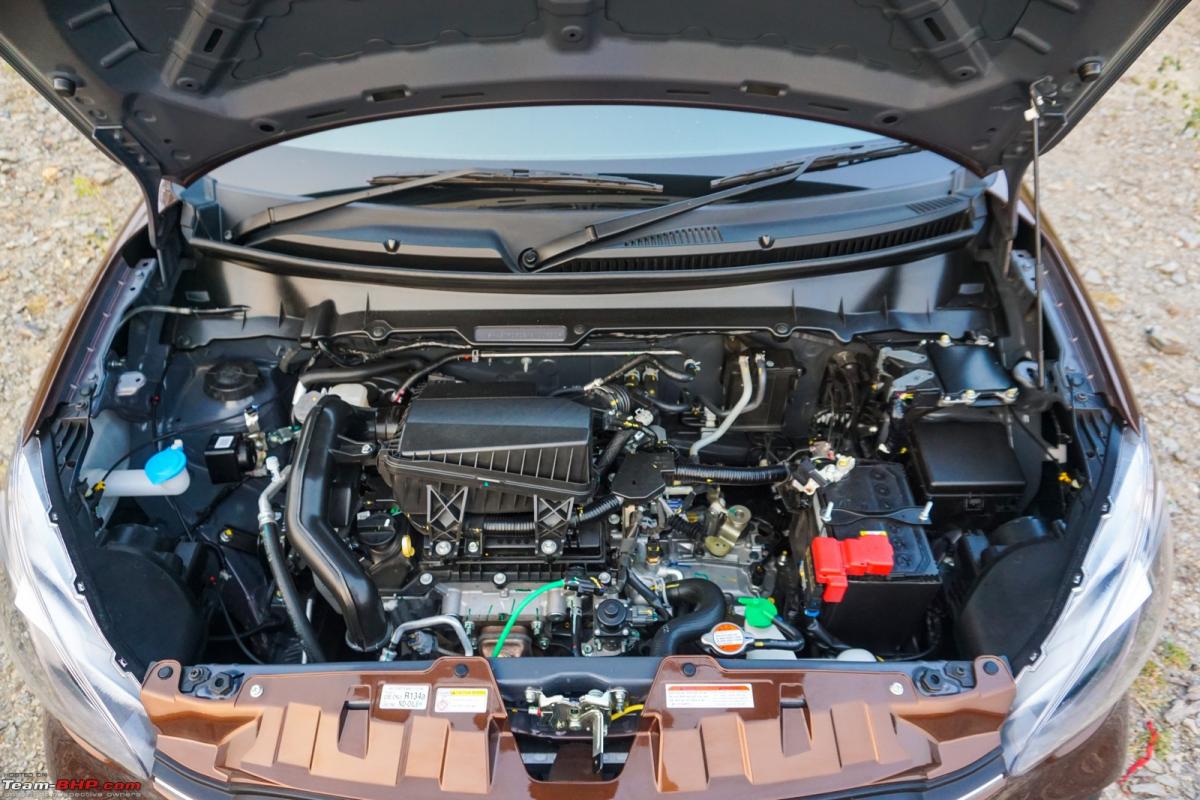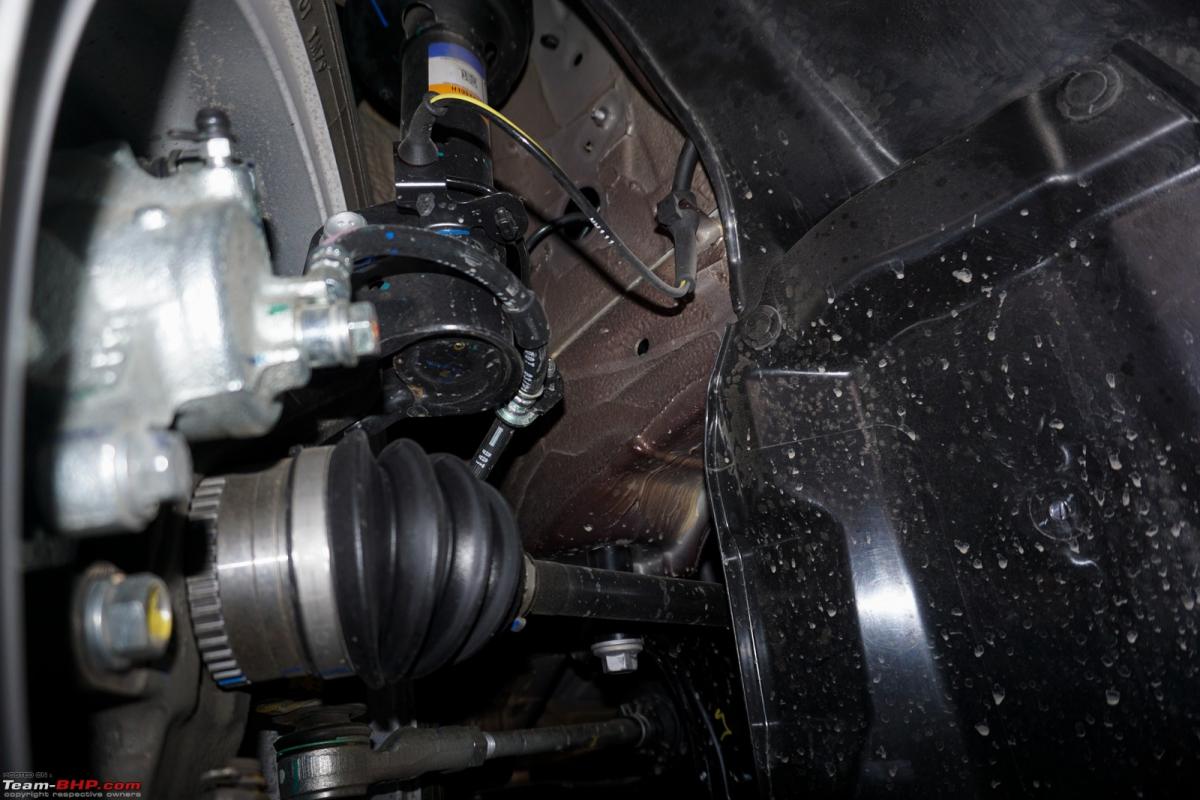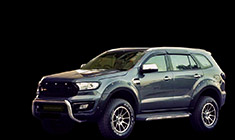News
2021 Maruti Celerio: Our observations after a day of driving
Release the light clutch and the Celerio rolls off from a standstill with ease. Driveability is excellent and the light kerb weight makes things easy for this little 1.0.
Driving the Maruti Celerio 1.0L Petrol MT
This is the 998 cc, 3-cylinder, 12V DOHC, all aluminium K10-C petrol engine that has been introduced with the Celerio. It churns out 66 BHP @ 5,500 rpm and 89 Nm @ 3,500 rpm. Like the previous versions of the K10, this engine is peppy and quite enjoyable to drive:

We’ve mentioned before that the Celerio is powered by the K10-C engine, but what exactly is different compared to the 'B' series engine that we’ve seen in the S-Presso and the WagonR? For starters, there are two notable additions – Dual Jet and Dual VVT. This means that there are two injectors (Dual Jet) per cylinder that spray fuel into the combustion chamber. Having two injectors leads to better atomisation and thereby cleaner combustion. It also means that the compression ratio has also gone up from 11 in the K10B to 11.5 in the K10C. VVT or variable valve timing adjusts the valve timing to increase fuel efficiency and in a 'dual' VVT system, both intake and exhaust valves are adjusted to maximise fuel efficiency and performance. The engine also gets a water-cooled EGR (exhaust gas recirculation) system. While most compression ignition (diesel) engines use EGR to reduce emissions, in spark ignition (petrol) engines, EGR actually helps in increasing efficiency. Apart from this, Maruti has also added an idle start-stop system that shuts off the engine while idling, which also helps the fuel efficiency.
With your leg on the clutch pedal, press the start/stop button to bring the engine to life. Release the light clutch and the Celerio rolls off from a standstill with ease. It can easily move away from 0 km/h in second gear too! Driveability is excellent and the light kerb weight makes things easy for this little 1.0. The motor feels very tractable in the city and it’s got a practical state of tune. The healthy low-end & perfect gearing means you do not have to downshift too often. Driving around in the city won’t be much of an issue for this small hatchback, in fact, it feels very much at home.
Out on the open road is where you would wish that this car had the 1.2-litre engine. Don’t get me wrong, the 1.0 engine performs alright and has all the traits that you would expect of a K-series motor. But, after having driven the WagonR 1.2, which is not much heavier, you will be left longing for the bigger engine (especially when it is available for lesser money). The Celerio’s 83 BHP / ton power-to-weight ratio makes a big difference here (WagonR = 99 BHP / Ton). Even the S-Presso feels more lively given that it’s ~ 100 kg lighter (92 BHP / ton). Compared to these two, the Celerio feels just about okay in terms of highway performance. Cruising at 100 km/h in 5th gear, the motor spins at ~2,750 rpm, while 120 km/h is seen at ~3,250 rpm. For quick overtaking manoeuvres, while cruising at 100 km/h, you will have to shift down to 3rd gear as there’s not much progress when you floor the A-pedal in 4th gear. It’s best to cruise between 90-100 km/h in 5th gear. The tall 3rd gear and occasional downshifts to 2nd would take care of your pedal-to-metal driving when on twisty roads. Overall, the motor responds well when pushed hard, but leaves you wanting for more.
The clutch is nice and light to operate, with just the right travel length. The 5-speed gearbox is good to use with throws on the shorter side. It’s a pleasure to operate, even if it is slightly rubbery.
Noise, Vibration & Harshness (NVH)
Since this is the new platform, Maruti has gone for a pendulum type engine mounting system rather than the conventional 3-point mounting system from the previous generation Celerio. This has in turn made a lot of difference in reducing the engine vibrations. Heck, the 3-cylinder doesn’t even have a balancer shaft and still, the vibrations are well controlled.
At city speeds, the engine noise is kept under control and isn’t intrusive. But as the revs climb, the engine does sound strained and IMO it’s not very sporty like most enthusiasts enjoy. Cross 80 km/h and the road noise and wind noise started to creep into the cabin and at 100 km/h, they’re very audible. What’s worse, while driving over broken roads, you’ll hear pebbles hitting the inside of the wheel arches (as there is partial / no cladding).
Mileage & Fuel Economy
Maruti has done a lot of things to maximise the fuel economy. The ARAI-certified fuel economy of the Celerio MT (LXI, VXI and ZXI variants) is 25.24 km/l while that of the ZXI + variant is 24.97 km/l. With the AMT gearbox, the fuel economy is 26.68 km/l for the VXI variant. The ZXI and ZXI+ AMT variants have a fuel economy of 26 km/l. This engine is known for its frugality & will give owners no reason to complain.
Driving the Maruti Celerio 1.0L Petrol AMT
The previous generation Celerio was the first Maruti car to get the AMT or as Maruti calls it, 'Auto Gear Shift' in India. The 2021 Celerio gets the latest generation Magneti Marelli sourced AMT unit for its 5-speed manual transmission which is available in the VXI, ZXI and ZXI+ variants.
The AMT mechanism is a simple bolt-on job and uses the Celerio MT's existing gearbox. It’s pretty straightforward in the way it works. Mechanically, the AMT gearbox is identical to the Celerio’s manual transmission. What's different is how the clutch is operated and how the gears are shifted. In the manual, the driver is responsible for these tasks. With the AMT, hydraulic actuators located in the engine bay operate the clutch and shift gears. There's no clutch pedal, and zero driver input is required for gearshifts, making it exactly like a conventional automatic to drive. Simply put, the mechanical functions of operating the clutch and gear lever have moved from inside the cabin to the engine bay. To know more about AMTs & how they work, click here.
Starting the engine up must be done with the gear lever in neutral. You have to press the brake pedal as well, else the engine won't fire up. There's no 'P' (park) mode or gear unlock button like in a conventional AT. Once fired up, slide the gear lever to 'D' (drive) to get going. As you release the brake, the car will move forward without any accelerator input. However, it doesn't move too fast and will top out at about 6-7 km/h, without any driver input. When you press the accelerator, you'll notice that the throttle response is quite immediate. It's exactly like a pure manual in this respect.
In city, traffic is where the AMT truly shines and brings the most benefits. There's no clutch pedal and there's no requirement for the driver to repeatedly shift between Neutral-1st-2nd either. In crawling bumper to bumper traffic, you don't need to give any accelerator input. Just release the brake a little bit, and the car crawls forward. The start-off is extremely smooth. Budget car owners will love the fact that their left leg is completely relaxed. The tricky part with the AMT in city driving though is parking into tight spots. Unlike a conventional AT where it's possible to ease the car forward very gradually, the AMT is more of an 'on or off' solution, as it tries its best not to slip the clutch more than required. This results in a more eager movement, which can be a bit tricky when getting in & out of tight parking spaces.
Gear-shifting quality is a universal sore point for Automated Manual Transmissions. The Celerio's AMT unit which is the improved version of the previous generation is actually very good. In fact, it seems like Maruti has finally caught up with Hyundai Santro’s smooth-shifting AMT. With a light foot on the accelerator, the gearshifts are barely noticeable. First-time automatic drivers won't have any complaints with the AMT. It’s only when you are driving with a heavy foot that the shifts are noticeable in the form of the typical head-nod.
People who are used to driving AMT cars will like this unit for sure. One of the ways to make your drive even smoother is to let off the accelerator at intervals, and the AMT will seize that opportunity to upshift. E.g. When going from 0-40 km/h, let off the accelerator very slightly at 10, 20 and 30 km/h, and the AMT will take each one of those opportunities to upshift a gear - almost like you told it to! Shift quality gets better between higher gears and is virtually seamless when going downhill. The AMT unit is smooth even while downshifting. While I was driving, I asked Zappo to spot the downshifts without looking at the tachometer. The downshifts were so smooth that he didn’t feel them from 5th gear to 3rd while decelerating gently. There's absolutely no noise or clunking when the gears shift.
Fuel efficiency is without a doubt what the AMT has been tuned for. This means the transmission is very eager to upshift and before you know it, you will be cruising along in 5th gear at 50 km/h. Even in crawling traffic, the AMT will upshift to 2nd gear at fairly low speeds. When the rpms drop, the transmission will downshift to a lower gear. The 'current gear indicator' on the MID keeps you in the loop as to which gear is engaged. It's quite a novelty and will be appreciated by prospective and existing owners of the Celerio AMT. The idle start-stop feature in the AMT variant can get annoying in bumper to bumper traffic. While it does maximise the fuel economy, the system shuts off the engine quite quickly and does take time to start up and get a move on. Only people who seriously want to get the most out of the fuel would be using this feature.
The engine gives out a nice blip on kick-down and doesn't hesitate to drop two ratios at a time (e.g. 5th to 3rd). With a heavy foot on the accelerator, the AMT holds a gear all the way till the end of the rpm range before upshifting. The driver also has an option of 'manual mode' to prevent premature upshifts while overtaking on highways.
Manual Mode has other advantages, especially for the more enthusiastic drivers who want a higher degree of control. Like other hatchbacks with AMTs, the Celerio offers a Tiptronic-like manual mode. Towards the right of the MID gear indicator, there is a small alphabet readout: 'M' for Manual & 'D' for Drive, indicating the mode that you are currently in. In manual mode, the AMT will still not upshift automatically unless you reach the end of the rpm range. Conversely, if the rpm drops too low, the AMT will downshift to prevent the motor from stalling. If you try to upshift at too low an rpm or downshift at too high an rpm, the AMT will ignore your instructions and flash the gear indicator in protest. It's always a good idea to switch to manual mode before your favourite ghat section because it prevents sudden & unsettling gear changes mid-corner. An advantage of manual mode is that you can increase the amount of engine braking when going downhill. It's quite effective, although not as aggressive as in a pure MT. We recommend shifting to manual mode before overtaking when you need engine braking and of course, the times that you are in the mood for some fun.
The AMT unit is equipped with an extremely useful Hill Start Assist feature. What’s more impressive is that this isn’t the basic hill start assist feature that you see in most budget AMT units where the hill start assist is essentially an extension of the creep function. In such cases, the car rolls back at least a foot before going ahead. In the case of the Celerio, however, this is a proper hill start assist feature that will engage the brakes and hold the car in place on a slope. Be it a gentle incline or a steep one, the Celerio doesn't roll back an inch. Very impressive! Unfortunately, the same function isn’t offered in the MT variants. Technically speaking, it shouldn’t have been much of a pain to add the same system in the MT variants, especially if it's not a bare basic creep extension hill hold assist. It'll prove to be very useful for newbie drivers who otherwise will be burning up the clutch on steep inclines.
I'd also like to add that the AMT manages the clutch & gearbox a lot better than sub-par drivers out there. There's no doubt that it is more talented than a below-average driver in choosing when to shift, how to shift and what gear to drive in.
Suspension

Ride Comfort
The Celerio comes with a MacPherson strut suspension at the front and a torsion beam with coil springs at the rear. While most of the other cars that are based on the Heartect platform have a softer front suspension, the Celerio has a slightly stiffer side to it. Small bumps are felt, while large potholes register themselves sharply in the cabin. The suspension isn't silent in its operation either, and you can hear it work on a patch of bad road.
The 15-inch rims are shod with 175/60 tyres. The recommended tyre pressure is 36 PSI at the front and 32 PSI at the rear. That’s unusually high for the front and is also one of the contributors to the stiff ride. We would recommend dropping it down a little for a cushier ride in the city. With the slightly stiffer suspension, however, vertical movement at high speeds is well controlled and the car doesn’t bounce around at 80-100 km/h.
Handling & Dynamics
As you would expect with a stiffer suspension setup, the straight-line stability is satisfactory. Driving at 120 km/h also doesn’t feel as daunting as it would in the previous generation Celerio. People taking the car on long road trips won’t be disappointed. A low centre of gravity also means that the body roll is well controlled. On long bends, the Celerio holds its line well without feeling nervous. Quick lane changes are also handled very well and the car seems eager to change directions. When pushing the car hard, you will notice that the chassis and the suspension can easily handle a lot more than 66 BHP available. The 175/60 R15 Yokohama BluEarth FE tyres on our test car provided decent grip.
Steering
The electric power steering in the Celerio is one-finger light during parking and city speeds. This makes it a very easy car to drive in urban surroundings. However, it can also be unnerving as some might feel the steering is too light and vague in the centre and you get no feedback at all. It’s pretty much dead like a video game steering. The mass market will like it though. At higher speeds, the steering does weigh up, but the complete lack of feel or feedback can be unnerving. Like the steering in most Maruti cars, there is no strong return to centre action. Leave the steering at a slight angle while driving and you will keep on going in that direction. You have to manually straighten it.
Braking
The Celerio is equipped with disc brakes at the front and drum brakes at the rear. The brakes perform well and as you would expect without any drama. I wish there was a more progressive feel to the brakes though.
Niggles & Problems
The previous generation Celerio had quite a few issues with the AMT unit. Hopefully, the newer generation Magneti Marelli AMT unit isn’t riddled with problems. Apart from this, Maruti has a wide service network and part availability is never much of an issue. So ownership experiences should be satisfactory. That being said, get the extended warranty without giving it a second thought.
Continue reading the discussion on the 2021 Maruti Celerio on our forum.
- Tags:
- Indian
- Maruti Suzuki
- Other
- Review
- Celerio












.jpg)






